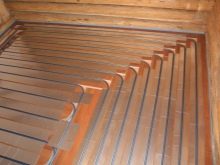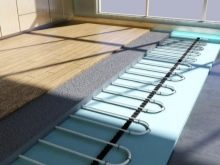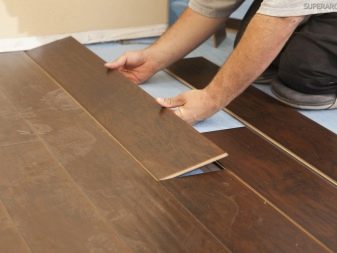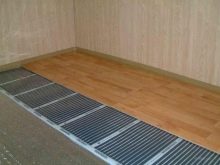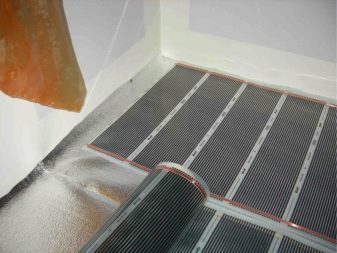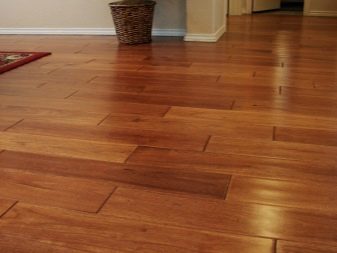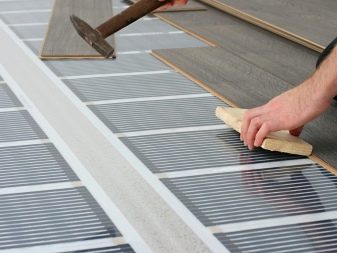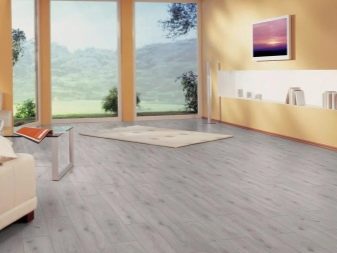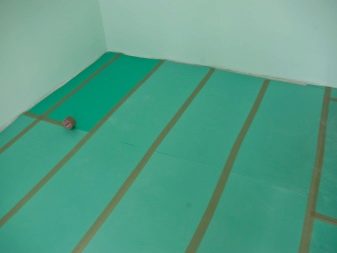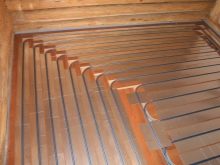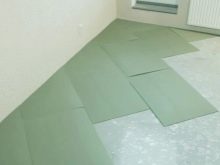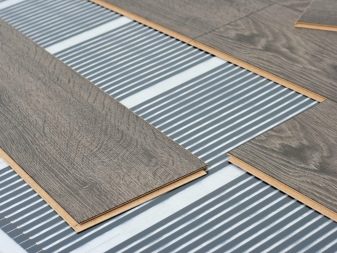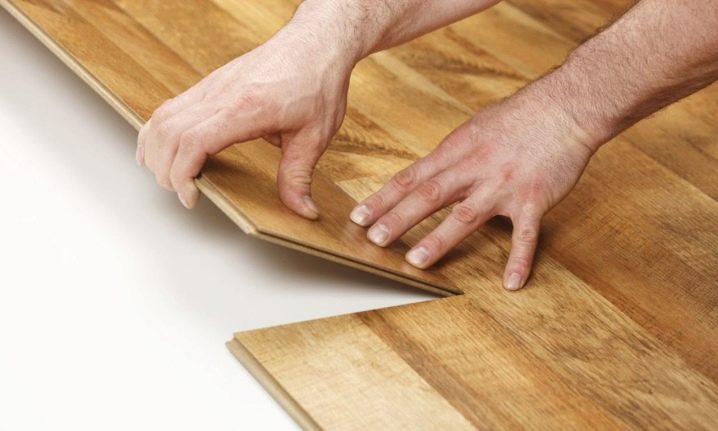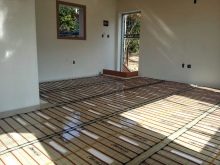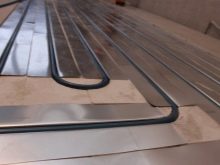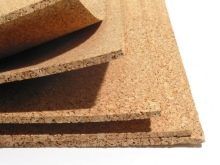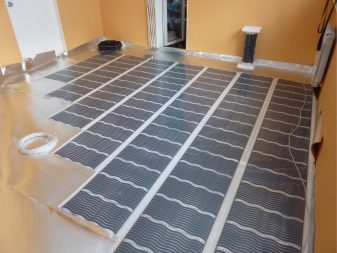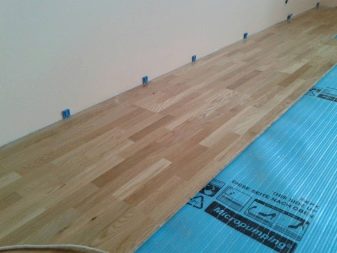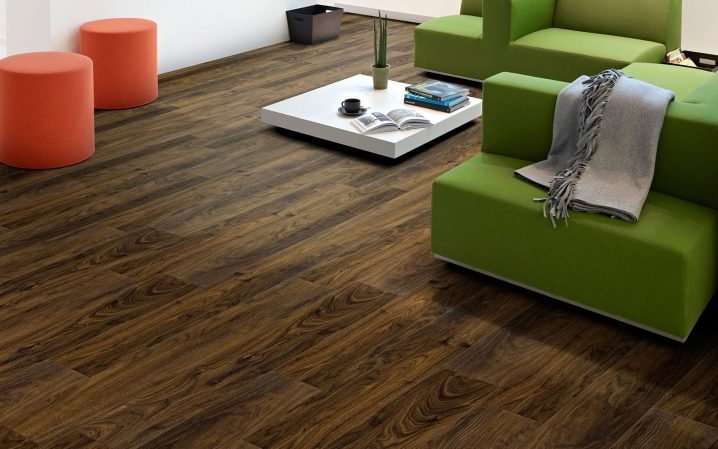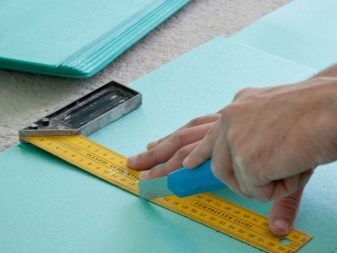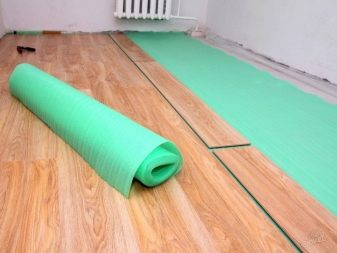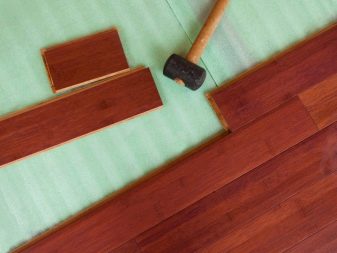Laminate underlay for underfloor heating: types and features
The choice of substrate for the laminated coating is not particularly difficult if we are talking about ordinary floors. The situation is somewhat different if the substrate under the laminate is required for the arrangement of a heated floor. Such coatings are a subject of particular interest to those who decide to get insulated floors.
Types and materials
Among the substrates that are currently available to the consumer, one of the most sought-after products is foam polypropylene. In those days, when the laminate was a novelty among the flooring, its polypropylene base was the only available option. The advantages of this material are its affordability, absolute moisture resistance and good leveling ability. Polystyrene foam is also distinguished by the ability to absorb sound waves.
However, such a framework cannot be considered ideal. This material is not capable of carrying significant static loads and is quickly flattened out.
Another type of laminate base is extruded polystyrene backing. The strength of this material is high strength combined with affordable cost.
Other useful properties of extruded polystyrene foam are good moisture insulation and the ability to absorb steam. This is especially valuable for laminate, which is not protected from moisture from the back side.
This material has its drawbacks. Extruded polystyrene is flammable and has a short (not higher than 6 - 7 years) service life. Even its brands with fire retardants and other additives, which are individually considered to be non-combustible, differ in their ability to burn. This is because at high temperatures, any kind of expanded polystyrene undergoes thermal decomposition. The result is the formation of a huge amount of highly toxic substances in the form of smoke.
An example is the Polish arbtion. This economical material is made by extracting polystyrene into dense rolls. It is equipped with adhesive tape for fastening and is covered with a vapor barrier, has excellent waterproofing properties and high density properties, has an unlimited service life.
The next type is a cork substrate under the laminate. This material is in high demand, despite the fairly significant cost. Its popularity is due to the durability and environmental friendliness of the cork. Due to its organic nature, this base for laminate flooring is resistant to biological factors.
However, when choosing a substrate from cork, you should know that its cheap varieties are easily stained. At the same time, small fragments appear, causing the laminate to creak. This material has a low moisture resistance, so it is not advisable to use it in bathrooms, toilets, or other rooms with high humidity.
Coniferous substrate is made in the form of sheets of hardboard, the raw material for which for the most part is pine.This basis is characterized by high strength and thermal conductivity. Pine fiberboard plates are a "breathable" material, as they let the air through almost without hindrance. The slabs are capable of absorbing up to 20% of moisture relative to their volume without sacrificing performance.
The only drawback of the coniferous substrate can be called its lack of elasticity. As an example of such a substrate can be called isoplat, which is a sheet material. It is made by pressing wood fiber waste woodworking spruce or pine. This coating is completely environmentally friendly. When installing a water floor in conditions of high humidity, the isoplatas swell and may increase, acquiring additionally up to a third of their volume, without loss of thermal insulation properties.
Another type of base for laminated flooring should be considered foiled substrate. In addition to the core, it has a heat-reflecting layer. It is made of aluminum foil. Another type of such a layer may be a metallized polymer film.Such a framework acts like a thermos wall, effectively reflecting infrared radiation and minimizing heat loss. Modern manufacturers offer rolled foam with foil-coated bottom and top layers.
As for the perforated substrates under the laminate coating of a warm water floor, they are made of sheets of extruded polystyrene foam that looks like an accordion. Through the use of perforated sheets, a higher level of heat transfer is achieved. Quantitative indicators of the temperature regime of such a substrate allow it to withstand very high temperatures.
The perforated profile of extruded polystyrene sheet also prevents deformation of the laminate coating and provides significant savings in heating costs.
How to choose?
The substrate should be selected in thickness, taking into account the probability of deflection of panels and deformation of locking joints. It increases with a considerable thickness of the material and its tendency to subsidence due to mechanical loads. Therefore, it is advisable to choose a substrate with a thickness of 2-4 mm, maximum 5 mm.This indicator varies somewhat depending on the type of product.
As for the base on which the warm floor is being mounted, when using a concrete base one should be aware that the concrete allows moisture to pass through, especially in the absence of waterproofing.
For concrete floors, it is not recommended to use moisture-based foundations. from natural material (for example, cork). This is especially true of premises located above the basement or on the ground. Laying of such material on the basis of concrete can be made only on the waterproofing layer of polyethylene film.
If, however, the foundation is laid under the lamella on the base of wood, when the floor consists of boards, plywood, particleboard of various types, then you can use a substrate of almost any kind. Waterproofing characteristics in this case are not of fundamental importance, since any wooden base itself must be dry and protected from moisture. Therefore, the main criteria here are the naturalness of such a substrate, its ability to absorb, thermal insulation properties and price.
For water floor
In addition to the above characteristics of the main types of bases under the laminated board, you should pay attention to the design of a warm water floor. Such a floor is a collection of tubes in which coolant circulates. These tubes are laid on top of a layer of polystyrene foam and are poured with a concrete tie, above which the substrate itself is placed under the laminate coating. Thus, the substrate is located between the heating circuit and the lamellae. Therefore, the best solution here is to use the product with the lowest thermal resistance.
If an inexpensive substrate is chosen, then inevitably problems will arise with the swelling of the laminate.that will start making unpleasant sounds. Therefore, you should select only high-quality materials, characterized by good sound insulation and thermal insulation characteristics, ability to level. The substrate under the laminated coating must be moisture-resistant, capable of evaporation of condensate and easily withstand temperature differences.
For infrared floor heating
Infrared heat-insulated floors these days are no less popular than water-heated floors.Their peculiarity lies in the fact that heat transfer occurs not as a result of contact heat exchange, but due to thermal radiation from an IR emitter, which is the main element of the system. It is a type of film mounted directly under the lamella, thereby eliminating the need for a concrete screed.
Substrates under the laminated flooring with infrared heating are placed directly under the infrared film, so there is no obstacle to the flow of heat to the laminate.
The choice of material is carried out on the basis of its cost and mechanical strength characteristics. Leakage of moisture in this case, in principle, cannot be due to the absence of tubes with heat carrier, therefore, installing a warp from a cork with the use of foil, without which heat loss from the IR heater is unavoidable, is very appropriate as a substrate.
Care should be taken when using polystyrene foam substrates with infrared heat-insulated floors, due to the release of a large amount of unhealthy volatile substances when the expanded polystyrene comes into contact with the heated surfaces of the infrared heater.
Qualitative characteristics
Summing up, it should be said that the laminated coating, apart from aesthetics, is also distinguished by its solid cost. For this reason, the component materials must be of adequate quality. The use of budget substrates is fraught with undesirable consequences: bloating of the laminate laid on poor-quality material. Therefore, you should pay close attention to the sound insulation properties, the ability to level, resistance to alkalis, thermal insulation characteristics and moisture resistance of such a substrate.
A quality product for the floor should scare off rodents and insects so that its material is not an attractive source of food or a place to move.
Another criterion for choosing a quality substrate for a laminate should be its microventilation characteristic - the ability to evaporate condensate accumulating in it.
The substrate must have good cushioning properties.to reduce the load on the lock joints of the laminated plate, to have a good reflectivity, resistance to temperature differences, environmental friendliness, resistance to deformation, ease of installation and high vapor barrier properties.
Substrates can be used not only for floor heating equipment, but also as a basis for parquet flooring and ordinary laminate.
Tips on how to choose the substrate under the laminate, you will find in the next video.


